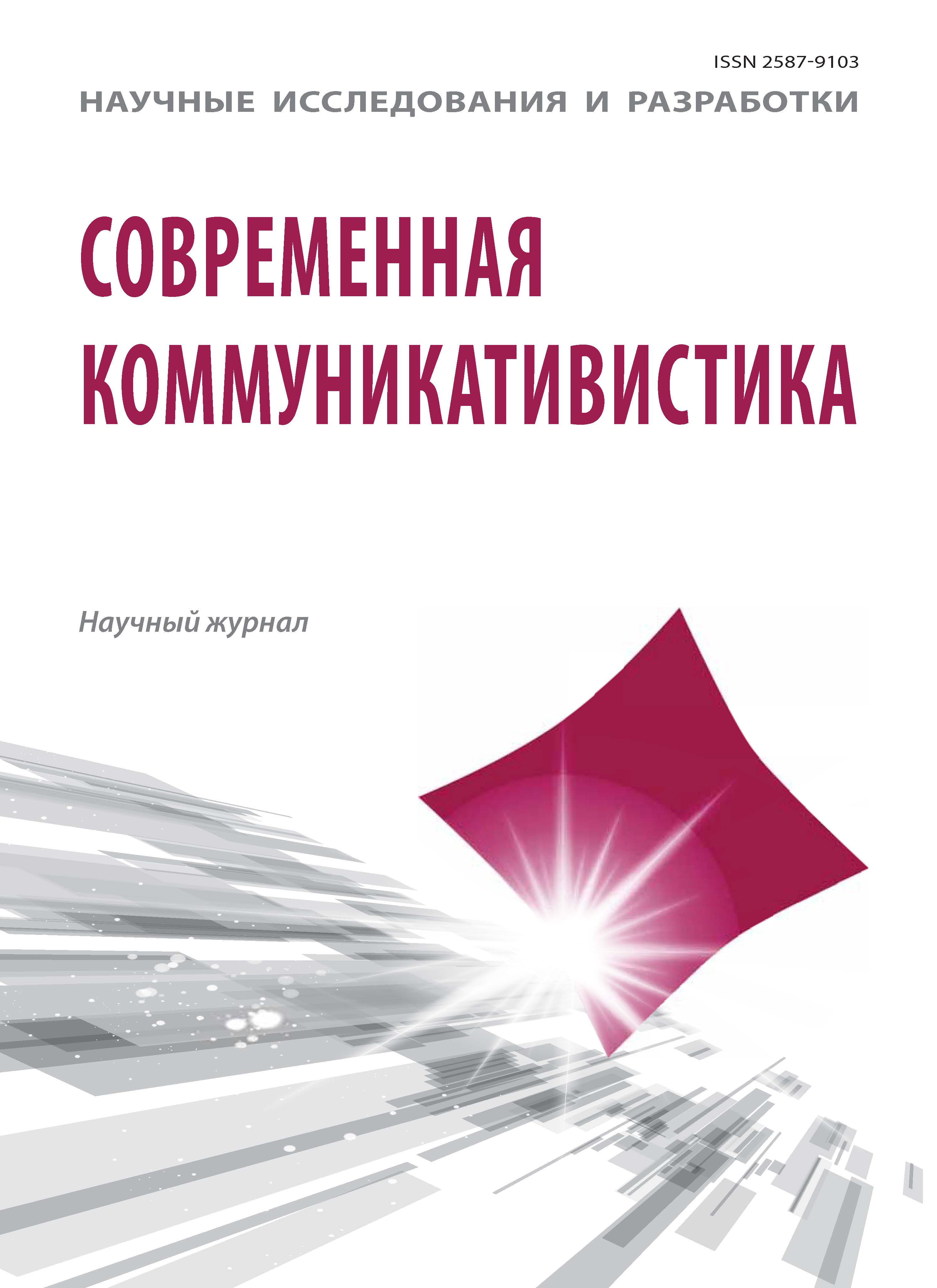Russian Federation
Russian Federation
One of the main tasks of teaching a foreign language is the formation of communicative competence. This concept was introduced by the american linguist D. Himes. He believed that language proficiency is not limited to knowledge of the vocabulary and grammar, but presupposes a clear idea of in what speech conditions certain words and grammatical constructions can or should be used. In the process of distance learning, the formation of communicative competence becomes much more difficult and requires the search for new teaching aids. A similar tool is the «Yeralash» film magazine. Short authentic stories are understandable sometimes even without words. On their basis, it is easy to introduce new and repeat the already learned vocabulary and phraseology of various thematic groups, to study grammar. In addition, the plots of the magazine allow you to analyze a specific speech situation (for example, a dialogue in a lesson, a conversation on the phone, a conversation between friends): to determine the topic of communication, the communicative intention of the addressee and the addressee; evaluate the appropriate language tools. And then build your own statement: formulate the main idea of the plot, express your opinion, substantiate it, etc. This thought is not completely new. However, the study of literature, methodological publications (Kazakova Yu. V., Kashpireva T.B., Kigel Tali, Solovyova T.A., Khramchenko T.A.) made it possible to conclude that there are not so many such studies. At the same time, there is a lack of developments specifically for the initial stage of studying RFL on specific topics of "Yeralash", and not general reflections and conclusions about the use of issues of this journal as methodological material. This article attempts to partially fill this gap.
Russian as a foreign language; communicative competence; "Yeralash"; initial level; working methods
1. Grachevskiy B.Yu. Vodopad [Waterfall]. Available at: https://www.youtube.com/watch?v=qh0IdnaZLw4&ab_channel=%D0%9A%D0%B8%D0%BD%D0%BE%D0%B6%D1%83%D1%80%D0%BD%D0%B0%D0%BB%D0%95%D1%80%D0%B0%D0%BB%D0%B0%D1%88.
2. Grachevskiy B.Yu. Interesnaya kniga [Interesting book]. Available at: https://www.youtube.com/watch?v=OE70FMj4iE8&ab_channel=%D0%9A%D0%B8%D0%BD%D0%BE%D0%B6%D1%83%D1%80%D0%BD%D0%B0%D0%BB%D0%95%D1%80%D0%B0%D0%BB%D0%B0%D1%88.
3. Grachevskiy B.Yu. Luzha [Puddle]. Available at: https://www.youtube.com/watch?v=SfbRVVvHcqk&ab_channel=%D0%9A%D0%B8%D0%BD%D0%BE%D0%B6%D1%83%D1%80%D0%BD%D0%B0%D0%BB%D0%95%D1%80%D0%B0%D0%BB%D0%B0%D1%88.
4. Grachevskiy B.Yu. Novaya shkola [New school]. Available at: https://www.youtube.com/watch?v=lTsrTY4fzfs&ab_channel=%D0%9A%D0%B8%D0%BD%D0%BE%D0%B6%D1%83%D1%80%D0%BD%D0%B0%D0%BB%D0%95%D1%80%D0%B0%D0%BB%D0%B0%D1%88.
5. Grachevskiy B.Yu. Ploshchad' Afriki [Africa Square]. Available at: https://www.youtube.com/watch?v=geuwUThPr8s&ab_channel=%D0%9A%D0%B8%D0%BD%D0%BE%D0%B6%D1%83%D1%80%D0%BD%D0%B0%D0%BB%D0%95%D1%80%D0%B0%D0%BB%D0%B0%D1%88.
6. Grachevskiy B.Yu. Serega vykhodi [Serega come out]. Available at: https://www.youtube.com/watch?v=Ag7PftsZU7o&ab_channel=%D0%9A%D0%B8%D0%BD%D0%BE%D0%B6%D1%83%D1%80%D0%BD%D0%B0%D0%BB%D0%95%D1%80%D0%B0%D0%BB%D0%B0%D1%88.
7. Grachevskiy B.Yu. Telefonnyy razgovor [Telephone conversation]. Available at: https://www.youtube.com/watch?v=wOt6qGs1Bbk&ab_channel=%D0%9A%D0%B8%D0%BD%D0%BE%D0%B6%D1%83%D1%80%D0%BD%D0%B0%D0%BB%D0%95%D1%80%D0%B0%D0%BB%D0%B0%D1%88.
8. Grachevskiy B.Yu. Ulitsa Raduzhnaya [Raduzhnaya Street]. Available at: https://www.youtube.com/watch?v=JhpQXLHbOzI&ab_channel=%D0%9A%D0%B8%D0%BD%D0%BE%D0%B6%D1%83%D1%80%D0%BD%D0%B0%D0%BB%D0%95%D1%80%D0%B0%D0%BB%D0%B0%D1%88.
9. Kazakova Yu. V. Priemy raboty s videotekstami na urokakh RKI (na primere kinozhurnala «Eralash») [Methods of working with video texts at the lessons of RFL (on the example of the newsreel "Yeralash")]. Nauka YuUrGU. Sektsii sotsial'no-gumanitarnykh nauk : materialy 67-y nauch. konf. [Science of SUSU. Section of social and humanitarian sciences: materials of the 67th scientific. conf.]. Chelyabinsk: YuUrGU Publ., 2015, pp. 1385-1388. Available at: http://dspace.susu.ac.ru/xmlui/handle/0001.74/5654.
10. Kashpireva T.B., Solov'eva T.A. Videomaterialy na zanyatiyakh po RKI: razvitie kommunikativnoy kompetentsii v inostrannoy auditorii [Video materials in the classroom on RFL: the development of communicative competence in a foreign audience]. Molodoy uchenyy [Young scientist]. 2016, I. 13.2 (117.2), pp. 43-45. Available at: https://moluch.ru/archive/117/32399/.
11. Kigel' Tali Obuchenie audirovaniyu i govoreniyu s prosmotrom videosyuzhetov iz kinozhurnala «Eralash» na zanyatiyakh RKI [Teaching listening and speaking with watching videos from the Yeralash newsreel at the lessons of RFL]. Yazyk v razlichnykh sferakh kommunikatsii. Materialy III Mezhdunarodnoy nauchnoy konferentsii [Language in various spheres of communication. Materials of the III International Scientific Conference]. Chita: Zabaykal'skiy gosudarstvennyy universitet Publ., 2019, pp. 276-278. Available at: https://www.elibrary.ru/item.asp?id=42486122&.
12. Khramchenko T.A. Ispol'zovanie korotkikh yumoristicheskikh fil'mov v praktike prepodavaniya RKI [The use of short comic films in the practice of teaching RFL]. Evraziyskiy gumanitarnyy zhurnal [Eurasian Humanitarian Journal]. 2019, I. 2. Available at: https://cyberleninka.ru/article/n/ispolzovanie-korotkih-yumoristicheskih-filmov-v-praktike-prepodavaniya-rki.







